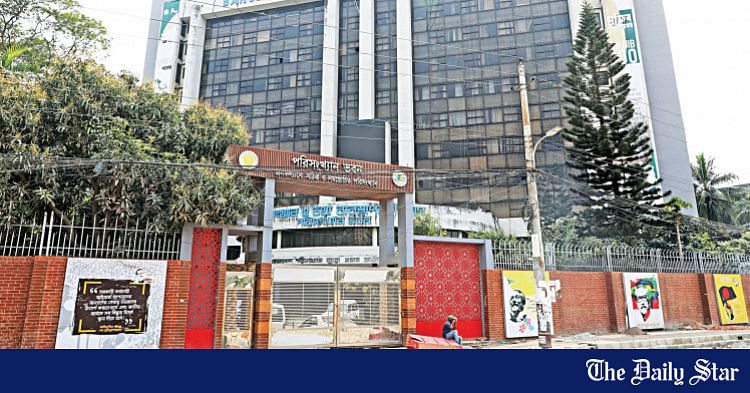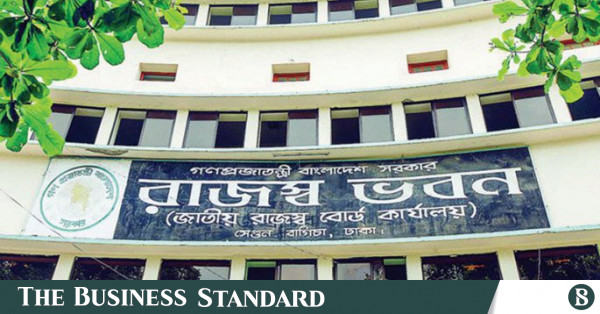BBS still faces challenges in imparting timely, credible data
As the Bangladesh Bureau of Statistics observes National Statistics Day-2022 today for the second year running, questions remain over how much the country’s premier agency for statistics has been able to keep to its missions of providing accurate, standardised and timely statistics since 1974. The photo was taken yesterday. Photo: Palash Khan
Without big data, you are blind and deaf and in the middle of a freeway.
This observation came from American author Geoffrey Alexander Moore. But it is quite pertinent for today's Bangladesh since there is an absence of timely and reliable data. Forget about "big data".
And this puts the Bangladesh Bureau of Statistics (BBS), the country's premier statistical agency, in the spotlight.
When a researcher or individual is interested to know more about Bangladesh's economic or social situation, they must turn to the BBS. But it is the government that needs credible data in a timely manner to make informed decisions.
"Providing accurate, standardised and timely statistics" has been one of the missions of the BBS since it began its journey in independent Bangladesh in 1
"The BBS has come a long way in terms of institutional and administrative capacity and expanding the coverage, frequency and reliability of statistics," said Zahid Hussain, a former lead economist of the World Bank's Dhaka office.
"There was a time when one had to visit the BBS office to collect inflation data. Now you can get them online."
The BBS is responsible for carrying out statistical programmes such as censuses on population, agriculture, manufacturing industries and establishments as well as other national surveys such as labour force, demographic situation, and household income and expenditure.
The agency is observing the National Statistics Day-2022 today, for the second year running.
Forty-eight years have passed but the BBS is still facing criticisms for its failure to produce data on time and maintain credibility due to a lack of proper management and political will.
Because of one of its failures, the sixth population census is set to see further delays as the state-run agency could not conduct it as scheduled even though four years have passed since drawing up a master plan.
The census, which is performed once a decade, offers complete data on population, its composition, workforce, density, housing and other socioeconomic indicators which are vital for formulating economic and other policies.
The last census was conducted in 2011, when the country's population stood at 15.17 crore. Currently, the estimated population is 16.8 crore, according to the Bangladesh Economic Review 2021.
The statistical agency prepared the master plan in 2018 and was supposed to publish a preliminary report on the exercise by July last year. In January 2021, it pushed back the date to October 25-31, but there has not been much headway, said BBS sources.
The BBS has also failed to ensure timely generation of the data on agriculture production.
Speaking to The Daily Star, Prof Md Aynul Islam, general secretary of the Bangladesh Economic Association, said reliable data is a key component for informed policymaking.
"The BBS is the sole authority to provide data in Bangladesh. But several data are not provided in a regular manner, which makes it difficult to make informed policy decisions."
Islam pointed out that the GDP figures provided by the BBS have faced questions recently.
"There is a general perception among the researchers that GDP figures in Bangladesh are overestimated. So, the BBS needs to win the trust of people. This issue should be addressed properly."
Similarly, the Household Income Expenditure Survey (HIES), which is supposed to be conducted every five years, is now seven years old.
The survey was due in 2015. The BBS completed it in 2016-17, meaning when data were finally made available, they were already three years old.
"The next HIES survey was scheduled in 2020. It is 2022, and we do not have any information on the survey," Islam said.
During the coronavirus pandemic, the dearth of updated data posed challenges to the government as there is no information on the number of new poor or job losses. But the information is important to design stimulus packages and other policies targeting poverty and vulnerability.
The labour force data used to be published quarterly. But after 2015 and 2016, it was discontinued.
The BBS was also given the responsibility to conduct a census to develop the National Household Database, which will be used to improve the beneficiary selection process for social security programmes. The agency conducted the census in 2017 but has not released the data yet.
"The data had become outdated even before their release," Islam added.
Ahsan H Mansur, executive director of the Policy Research Institute of Bangladesh, also lauded the BBS for publishing updated data.
"However, the BBS should work independently and be accountable to the parliament. Its data should not be reviewed by any political parties or approved by a cabinet meeting, as it is a sensitive issue."
Prof Selim Raihan, executive director of the South Asian Network on Economic Modelling, says the BBS has some success in generating and publishing data and carrying out surveys.
"Its performance is better than many developing countries in the Asia-Pacific region."
However, there are shortcomings.
"Not only research organisations, but many government officials have admitted to a lack of qualitative data," said Raihan, a professor of economics at the University of Dhaka.
In a broader sense, after 48 years of the BBS's journey, it is still not in a good position. The role of the state-run agency has become even more important at a time when the government is working to achieve the Sustainable Development Goals.
"Willingness to work is a major issue to overcome the situations rather than funding," said Prof Raihan.
BBS Director-General Mohammad Tajul Islam could not be contacted for comments.
Zahid Hussain says a country needs statistics to assess development strategies.
"But when statistics are not available at regular intervals, you will face difficulty and then you will have to make a guess relying on whatever information you have."
"Statistics have not been available at regular intervals despite reforms and various projects."
Hussain says so far, there has been no controversy about poverty and employment data. "But there is a question about GDP growth, inflation and even agriculture production figures."
"I don't know how many people trust the inflation data of the BBS because consumers see a different picture when they go to the kitchen markets. So, the BBS has to publish important statistics regularly, and the problem related to credibility has to be overcome."
"Overall, there has been progress in terms of access and coverage of data, but the BBS still has a long way to go," Hussain added.
Without big data, you are blind and deaf and in the middle of a freeway.

www.thedailystar.net










